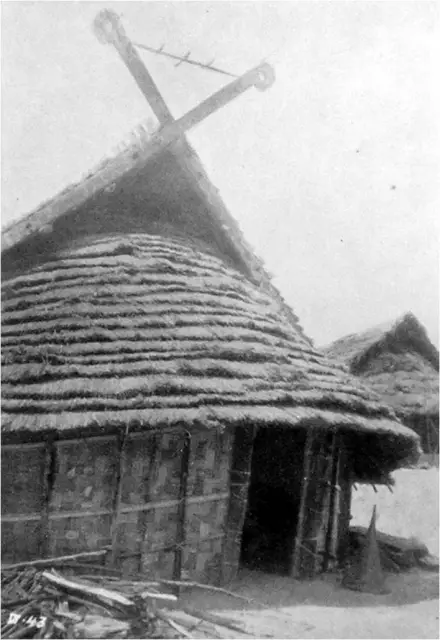
Chief Sakhalu’s Hut
Village Sakhalu Nagami
BUILDING MATERIALS
- The primary construction materials were:
- TIMBER – for structural elements, like the posts
- BAMBOO – for walls and other structural elements
- THATCH – as the roofing material.
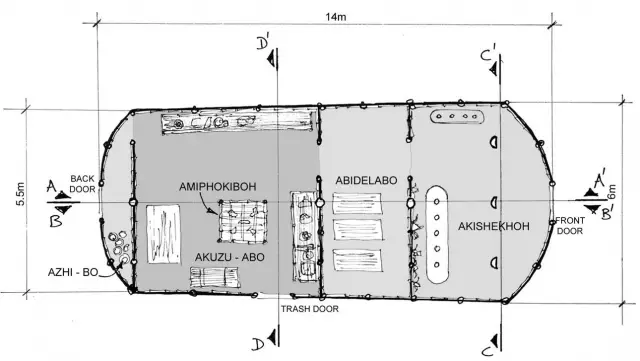
- The interior of the Sema house was ordinarily divided into four parts –
- The Akishekhoh – or front room where the rice pounding tables were kept.
- The Abidelabo – a narrow room between the Akishekhoh and the Amiphokiboh (hearth room) where the unmarried girls of the household sleep.
- The Akuzu-Abo – where the head of the family (father) and his wife sleeps.
- The Azhi-Bo – the liquor room where rice beer is stored in bamboo jugs.
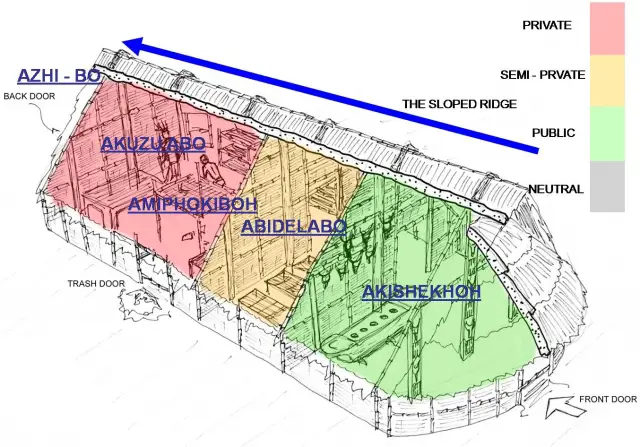
THE AKISHEKHOH
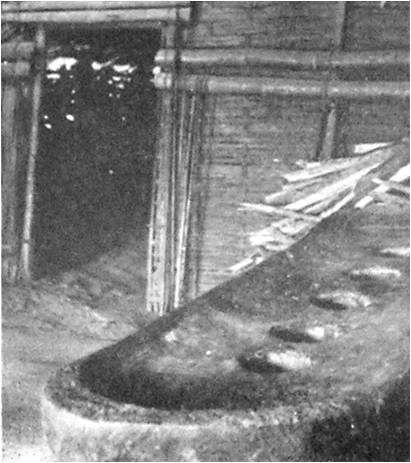
View of the rice pounding table
- This is where they keep the rice pounding tables.
- The Akishekhoh is an apse like addition to the front of the house, semicircular in plan with the eaves brought down to within 3 or 4 feet from the ground.
- Grain collected from the field is stored in large bamboo woven baskets.
- The grain is pounded in the large wooden rice pounding tables (apasü) as and when required.
- The grain is pounded mainly by the women of the household in the mornings or in the evenings, after returning from the fields.
- Animals – dogs, pigs, chicken are also kept here.
- The unmarried boys of the household sleep in here.
THE ABIDELABO
- This is where the unmarried girls of the household sleep.
- Firewood for the fireplace (Amiphokiboh) is also stored in this room.
THE AKÜZÜ – ABO –
- The head of the family – the father , in this case chief of the village and his wife or wives sleep here.
- Inside the Aküzü abo is the Amiphokiboh (hearth room).
- The father’s bed is nearest to the fireplace and the wife’s bed has a separate, smaller fireplace near her bed.
THE AMIPHOKIBOH – ‘Ami’ – fire, ‘Pho’ – smoke, ‘kiboh’- cover
- The fireplace consists of three stones on which a pot can be placed and the fire lit between the stones.
- At the four corners of the fireplace, are four bamboo posts which support a bamboo shelf. This serves the double purpose of preventing sparks to reach the roof and an excellent place to dry meat or keep utensils.
- The family eats the morning and evening meals around the fireplace.
- In common houses, guests may be entertained here as well.
- Near the fireplace, a large window, almost the size of a door is made – the trash door.
- Waste from the cooking is thrown out this window and collected outside which is cleared regularly.
THE AZHI – BO – Azhi’ – liquor, ‘Bo’ – place or room
- This room is located right at the back of the house.
- Rice beer is stored in liquor vats in this room.
- At the back of the house is a backdoor which usually leads to a small kitchen garden.
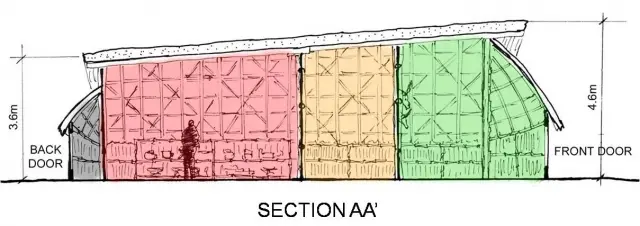
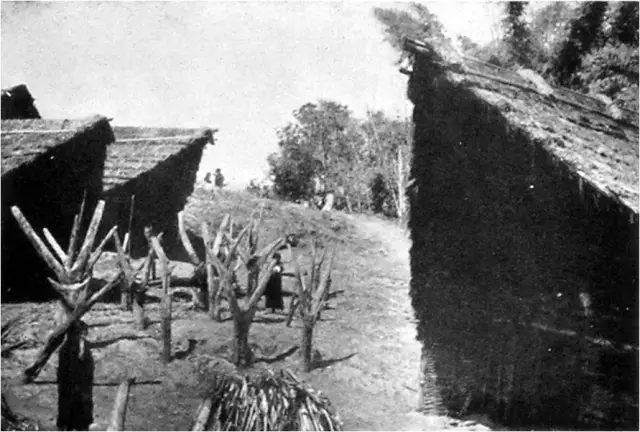
Chief Inato’s Hut
Village Lumitsami – Nagaland
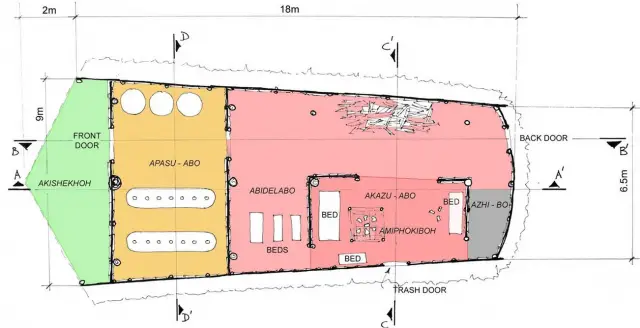
PLAN
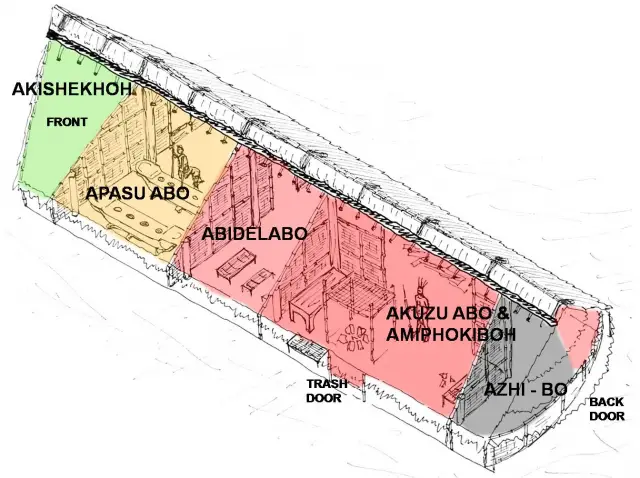
SECTIONAL – 3D VIEW

SECTION OF THE HUT
The Akishekhoh & Apasü – abo
- The Akishekhoh is usually where the rice pounding tables are kept.
- In this house, however, the rice pounding tables are kept inside the house, in a room called the apasü – abo (rice pounding table – room).
- All the functions of the Akishekhoh in Chief Sakhalu’s hut are now shifted to this room.
- The rest of the house is divided into similar divisions as in Chief Sakhalu’s hut.
ORNAMENTATION
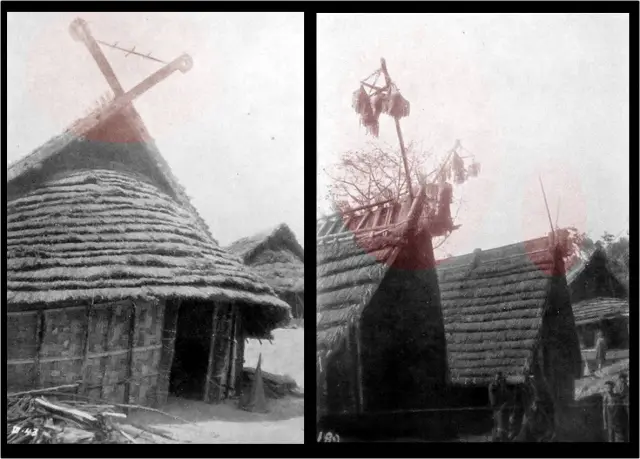
- The two bamboos forming the gable were prolonged beyond the roof to form horns called the tenhaku – ki (snail horns).
- These were sometimes decorated with bamboo tassels and imitations of birds.
- The Semas did not decorate their houses like other tribes – or at least not as much.
- They usually adorned their houses with the heads of game or Mithan heads which the owner slaughtered.
- Sometimes, in the chief’s house, human heads were also hung as trophies.
REQUIREMENT vs RESPONSE
- These dwellings, located mainly in the hilly regions came under the Cold and cloudy climatic category.
- The people then, relied mainly on their physical ability to resist the cold.
- The houses did protect them from the cold winds that blew but did little to retain heat within the house.
- Openings were kept to a minimum to retain as much heat within the house as possible.
- The fireplace was situated in the living quarters which helped in raising comfort levels within these spaces.
- The scale of the private spaces was also smaller which meant that a smaller heat source was required to heat the room.
- The sloped roofs worked beautifully in keeping the interiors dry.
- The steep slope of the roof ensured that no water could seep in through the gaps between the thatch and enter the house.
- The openness of the people did not require such a high degree of privacy.
- As a result the overall design of the house was kept simple, yet completely functional.
- It’s function not just extending to it’s activity space relation but it’s social and climatic context.

- These houses existed during the 1915 to the 1920’s.
- British anthropologists first discovered these settlements.
- The exposure of tribal people to civilization subsequent to those initial visits resulted in the rapid disappearance of these traditional systems of construction.
- After independence, such dwellings almost completely disappeared.
- The interest shown toward tradition extends only up to social and cultural levels, leaving architecture in the back seat.
- The only “traditional” architecture considered important to retain, merely as objects of fascination, like those in museums, were the “Morungs”.
- “Morungs” were essentially community built structures present in almost every village of different tribes in Nagaland.
- There used to be one such structure for boys and one for girls in each village.
- These buildings were used for community activities.
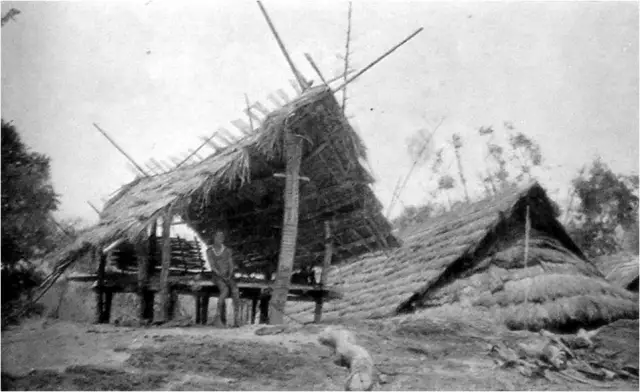
“Morung” in Philimi built on account of a bad harvest (1916)
- The function of the Morung being the community centre of the village shifted to the Chief’s hut.
- This in turn resulted in the Chief’s hut being the largest of structures in the whole village.
- The size of the chief’s hut emphasized his importance in the village society.
GEOGRAPHICAL SETTING
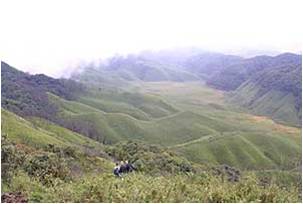
- Almost all Sema villages existed in the hilly regions in Nagaland.
- The Sema village is usually built either on the summit of a hill or on the shoulder of a spur.
- Down, near the valley of the river Dayang, where the climate is hot, a summit is usually chosen, but in the higher and colder regions, a shoulder below the ridge of a range of hills is a common site for a village.
- All the houses within the same village had the same style.
- This was to ensure that one would immediately be able to identify which tribe a particular village belonged to from a safe distance.
- The Semas were head hunters.
- Captured enemy trespassers would be beheaded and their heads hung up.
LIFESTYLE
- Life revolved around agriculture.
- The majority of each day would be spent in the fields.
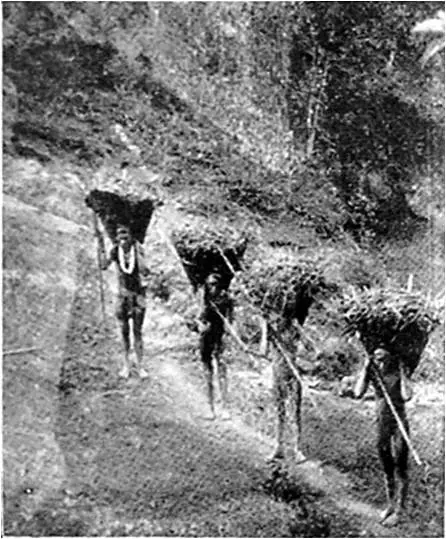
Villagers carrying home a load of harvest from the field.
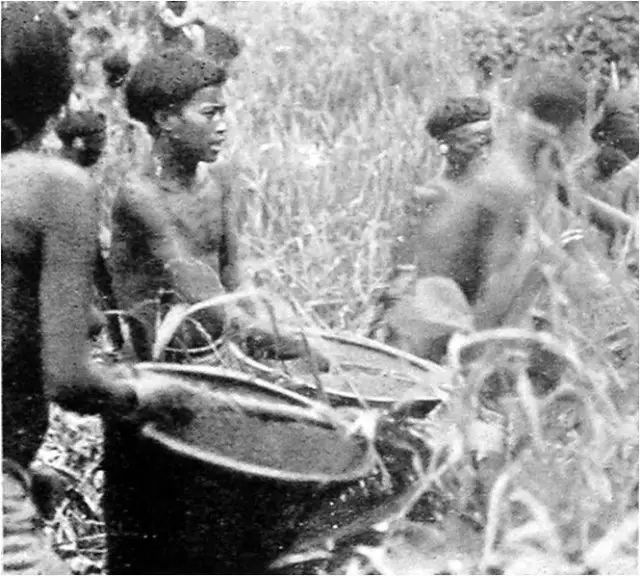
Harvesting in the field.
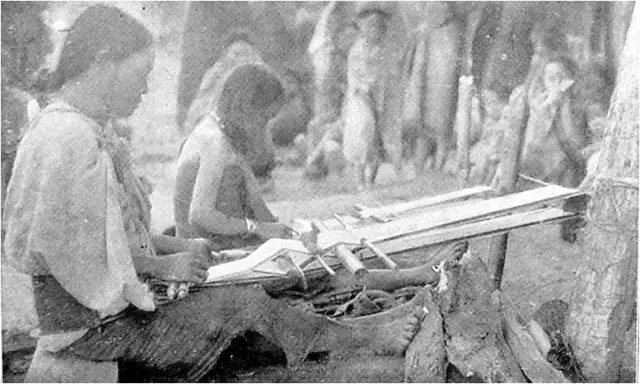
A woman weaving a shawl
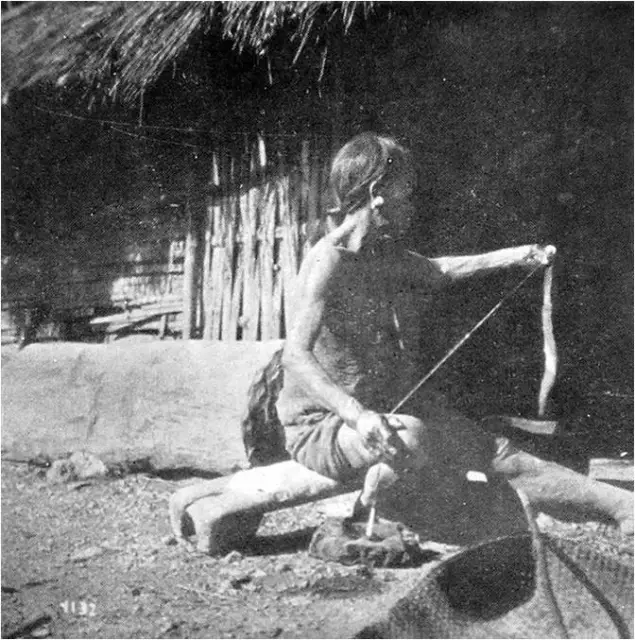
An old woman spinning thread.
By: INATO SEMA
This presentation is a result of the research documentation done by 2nd year students of SPA college on vernacular architecture.

very good presentation
arun
very good presentation
arun pal
architect